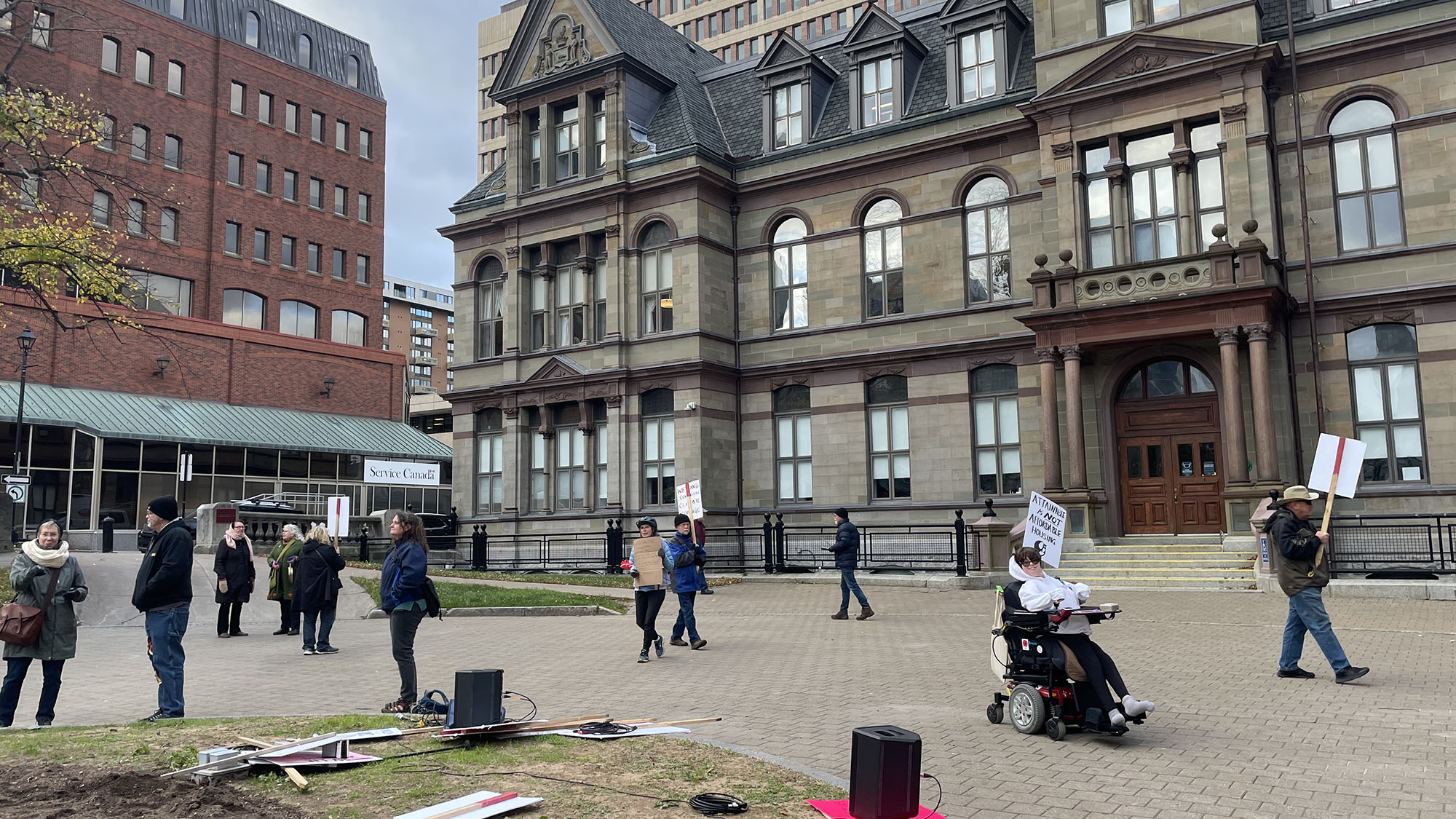Wetland advocates still fighting newly approved development near Eisner Cove
Controversial proposal to go ahead despite vocal opposition

caption
About a dozen members of Protect Our Southdale Wetland Society gather outside City Hall on Nov. 8.Members of a group fighting a proposed residential development near a wetland in Dartmouth are disappointed that the provincial government has quietly moved the Eisner Cove project ahead.
Protect Our Southdale Wetland Society members reacted this week after the HRM Executive Panel of Housing announced the approval of the development in the Mount Hope area of Dartmouth.
“The quiet posting continues to show the lack of respect this minister has for the democratic process,” said Bill Zebedee, president of the society, on Friday.
Housing and Municipal Affairs Minister John Lohr approved the development agreement on Oct. 25, but the housing panel only posted the update to the Shape Your City Halifax website on Nov. 9, a day after members of the society gathered outside City Hall to express their ongoing concerns.
The society is committed to the preservation and protection of the Eisner Cove wetland, a 12-hectare parcel located within 43 hectares of forest in Dartmouth.
According to information on the Protect Eisner Cove website, wetlands like Eisner Cove purify water systems, buffer the impacts of climate change, manage air quality, and moderate extreme heat.
Society members fear that the damage to the Eisner Cove wetland brought on by development will interfere with those environmental benefits.

caption
Victoria Levack is a member of Protect Our Southdale Wetland Society. She participated in the rally at Halifax City Hall on Nov. 8.In January, Halifax regional council approved a master planning process for two developments near the wetland. In March, following the approval, the provincial government said they would give a $22-million ‘forgivable loan’ to Clayton Developments to move ahead with the development, according to HRM’s Shape Your City website.
This decision came as part of the provincial government’s proposed solution to Nova Scotia’s housing crisis. According to their Affordable Housing Commission Final Progress report, over 45,000 Nova Scotian households are in core housing need.
The province’s Solutions for Housing and Homelessness October progress update says the government is on track to help 20,600 Nova Scotia households this year in obtaining and/or maintaining affordable and attainable housing. The Eisner Cove development is one of three major mixed-income projects intended to support 1,100 new affordable housing units across the province.
The housing task force held a public information meeting in February, followed by two separate online public commenting opportunities.
Despite these periods designed for public input, society members still feel their concerns are not being heard.
“The task force said they were going to be transparent – they have been anything but,” said Marnie Reynolds, a society member and retired social worker who was present at the Nov. 8 rally at City Hall.
Lohr gave a presentation at the regional council meeting at City Hall at 1 p.m. on Nov. 8. The next morning, the Shape Your City website was updated to confirm the approval of the development agreement.
According to the Clayton Developments website, construction will begin from Mount Hope Avenue and along Highway 111 and will take five to seven years.
Although development near the wetland is imminent, society members remain committed to their fight.
“We will continue to make our voices heard as we watch for environmental violations. We will continue to raise further concerns for the lack of public input, and growing concerns on the impact this development will have on the community,” said Zebedee.
About the author

Fiona Clancey
Fiona Clancey is a master's student in journalism at the University of King's College. She obtained her Bachelor of Music in voice from Mount...

S
Sandy Martin